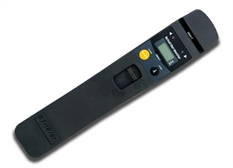High-Performance OFDA Solutions for Reliable Fibre Analysis and Testing
Wiki Article
Necessary Attributes to Try To Find in Optical Fiber Screening Devices
When evaluating optical fiber testing tools, several crucial functions necessitate cautious factor to consider to make sure optimal performance and integrity. Compatibility with existing market criteria enhances capability, while advanced measurement capacities, including TDR and OTDR screening, deal vital understandings into network stability. Recognizing these features will certainly lose light on how to select the right devices for your certain needs.Accuracy and Accuracy
Precision and accuracy are vital criteria in the evaluation of optical fibre screening tools. These two qualities make certain that measurements reflect real efficiency of fiber optic systems, which is vital for effective network installment, upkeep, and troubleshooting. Accuracy refers to the closeness of a determined worth to the real worth, while accuracy denotes the repeatability of measurements under the same conditions.When choosing optical fiber screening tools, it is important to consider instruments that supply high precision and accuracy to lessen mistakes in information analysis. Instruments such as optical time-domain reflectometers (OTDRs) and power meters need to have calibration devices to ensure consistent performance over time. Additionally, the specifications provided by manufacturers should detail the equipment's dimension unpredictability, which straight affects the dependability of test results.
Additionally, the performance of optical fibre testing equipment can be affected by ecological aspects, such as temperature level and humidity. For that reason, choosing equipment designed to minimize these variables will certainly improve measurement fidelity. To conclude, buying optical fiber screening equipment with durable precision and precision features is basic for keeping ideal network performance and ensuring the honesty of fibre optic communications.

User-Friendly Interface
The performance of optical fibre screening devices is not entirely identified by its accuracy and precision; a straightforward user interface plays a substantial role in boosting functional efficiency. A properly designed user interface simplifies the interaction in between the specialist and the tools, permitting a much more instinctive understanding of intricate functions.Secret attributes of a straightforward interface include clear navigating food selections, sensible layouts, and easily available controls. These components make it possible for specialists to carry out examinations promptly without considerable training, reducing the possibility of individual mistake - ofda. Additionally, aesthetic indicators such as progress bars, notifies, and graphical representations of data can substantially improve the customer experience by giving prompt responses on the screening procedure.
Furthermore, adjustable setups can better simplify procedures by permitting customers to readjust parameters according to particular testing requirements. This versatility not only conserves time yet also ensures that the devices fulfills varied application requirements.
Incorporating aid features, such as tooltips and thorough manuals, right into the interface can additionally empower individuals, advertising self-sufficiency and confidence in running the equipment. Eventually, an user-friendly interface is crucial for optimizing the potential of optical fibre screening equipment, resulting in extra efficient and efficient screening outcomes.
Mobility and Durability
Mobility and toughness are crucial characteristics of optical fiber screening equipment, guaranteeing that it can stand up to the roughness of various atmospheres while staying very easy to transportation. Specialists commonly function in varied settings, from telecommunications hubs to remote setups, making it imperative that testing tools are lightweight and small (ofda). Devices created with transportability in mind commonly includes ergonomic handles and cases that promote effortless motion, hence enhancing operational effectiveness on-siteLongevity is equally necessary, as optical fibre testing equipment is often exposed to extreme problems, consisting of temperature changes, wetness, and physical effects. Instruments constructed with rugged materials such as enhanced plastics or steel housings are better matched for these environments, lessening the risk of damages during usage and transportation. Furthermore, tools with water and dust resistance ratings, such as IP ratings, makes sure trusted efficiency in tough problems.
Compatibility With Standards
Guaranteeing compatibility with industry requirements is essential for optical fibre screening devices, as it directly influences the dependability and validity of examination results. Optical fibre networks undergo rigorous efficiency requirements established by different organizations, consisting of the Telecommunications Sector Association (TIA) and the International Electrotechnical Commission (IEC) Examining tools needs to abide by these standards to ensure that measurements are regular and comparable throughout different systems and settings.
When selecting optical fiber screening equipment, users need to confirm that the device meets pertinent requirements important to their fibre testing equipment specific application, such as those pertaining to depletion, bandwidth, and crosstalk. Tools that is compliant with established criteria not only aids in accomplishing accurate outcomes however also facilitates interoperability among gadgets from different producers.
In addition, compatibility with standards guarantees that the devices can be made use of in regulatory compliance situations, which is essential for projects in industries such as telecoms, aerospace, and armed forces applications. Investing in optical fibre testing equipment that aligns with existing industry standards is a fundamental element of preserving high quality guarantee and achieving ideal network efficiency.
Advanced Dimension Capabilities
Advanced dimension capacities are a specifying feature of modern optical fibre testing tools, permitting extensive evaluation of network efficiency. These capacities ensure that professionals can evaluate crucial criteria such as signal loss, diffusion, and bandwidth, which are vital for maintaining optimum interaction performance.One key aspect is the ability to conduct time-domain reflectometry (TDR) and optical time-domain reflectometry (OTDR) tests. These methods allow individuals to recognize faults, measure the size of fibers, and identify the place of flaws with impressive accuracy - ofda. In addition, innovative tools usually consists of the capacity to gauge optical power levels, aiding to evaluate the total health and wellness of the network and guarantee conformity with the needed specifications.
Furthermore, some screening tools offer advanced algorithms for real-time evaluation, allowing quicker medical diagnosis and troubleshooting. In final thought, spending in optical fibre testing devices with innovative dimension capabilities is important for making sure network integrity and efficiency in today's requiring telecoms landscape.
Verdict
Report this wiki page